He has lived all over Europe and comes from the world of finance: Francesco Belloni is the founder and CEO of Padel Hero, an operator of dedicated padel sports facilities in Italy. This Italian, who speaks fluent English and French, also invested in Padel Haus, the first padel club in New York State.
He gives us a very interesting vision based on international and business experience.
"Padel more powerful than tennis”
I started playing padel in 2018, during the summer in Italy. I immediately felt it had a more powerful social element than tennis, similar to 5-a-side football. At this point the sport was only being played in Spain and somewhat here and there in Italy – especially Rome – so I didn’t think about it too much beyond playing.
When I later left London and the world of finance in XNUMX that’s when I started thinking about Padel as a business opportunity as there was more “noise” around the sport. I began travelling across Europe, mainly Italy, Spain and Sweden (the more advanced markets) to understand the status of the game and intricacies in the markets where Padel was already a thing.
The economics of a single court and the overall business model were relatively easy to grasp, but I was more interested in getting a grip on where the Padel movement was headed and whether it could actually stand the test of time.
Within a few months I had built up enough conviction that it would and … here we are.
"Padel facing the test of time”
The economics of a single court and the overall business model were relatively easy to grasp, but I was more interested in getting a grip on where the Padel movement was headed and whether it could actually stand the test of time.
Within a few months I had built up enough conviction that it would and … here we are.
"Padel Hero, ultra-modern facilities”
Padel Hero’s concept is quite straightforward: we operate large-scale, padel-only sports clubs. I would say there are two elements that differentiate our clubs from others.
The first factor is the sheer number of courts – having volume. This has several advantages. You have a lot more flexibility in the way you use each court and its slots, and you can have more coaches operating at different hours (you should minimize lessons or clinics during peak hours). With the high demand there currently is, you can also accommodate more clients instead of having to continuously tell them there aren’t available slots.
That’s a problem many smaller clubs have. You can also host larger tournaments and organize more structured courses for both kids and adults. And you’ll attract larger sponsorship deals.
The combination of being a padel-only facility and having a large number of courts I think is the first critical way to position yourself above others.
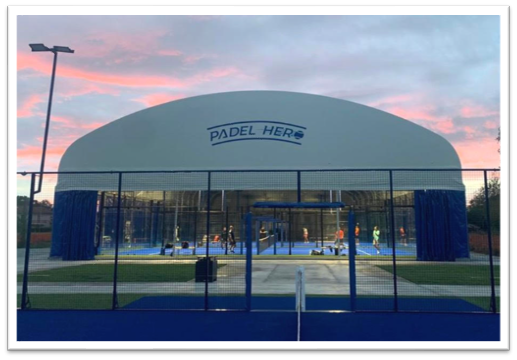
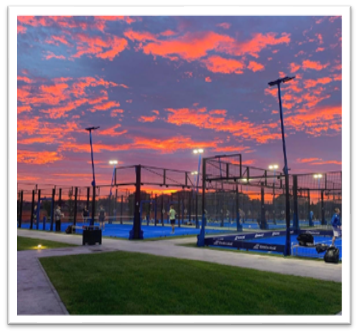
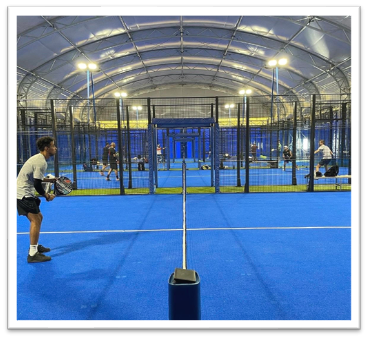
Padel in USA
So, for context, ever since I started looking at Padel from a business perspective, I always thought the Padel movement somewhat needed the sport to also take off in the United States for it to become a truly global phenomenon. About a year ago, friends of mine put me in touch with the now founder of Padel Haus, Santiago Gomez, when he first found the space. We got along well, shared a similar vision for the market and where it was headed in the US and the world. I decided to partner up with him.
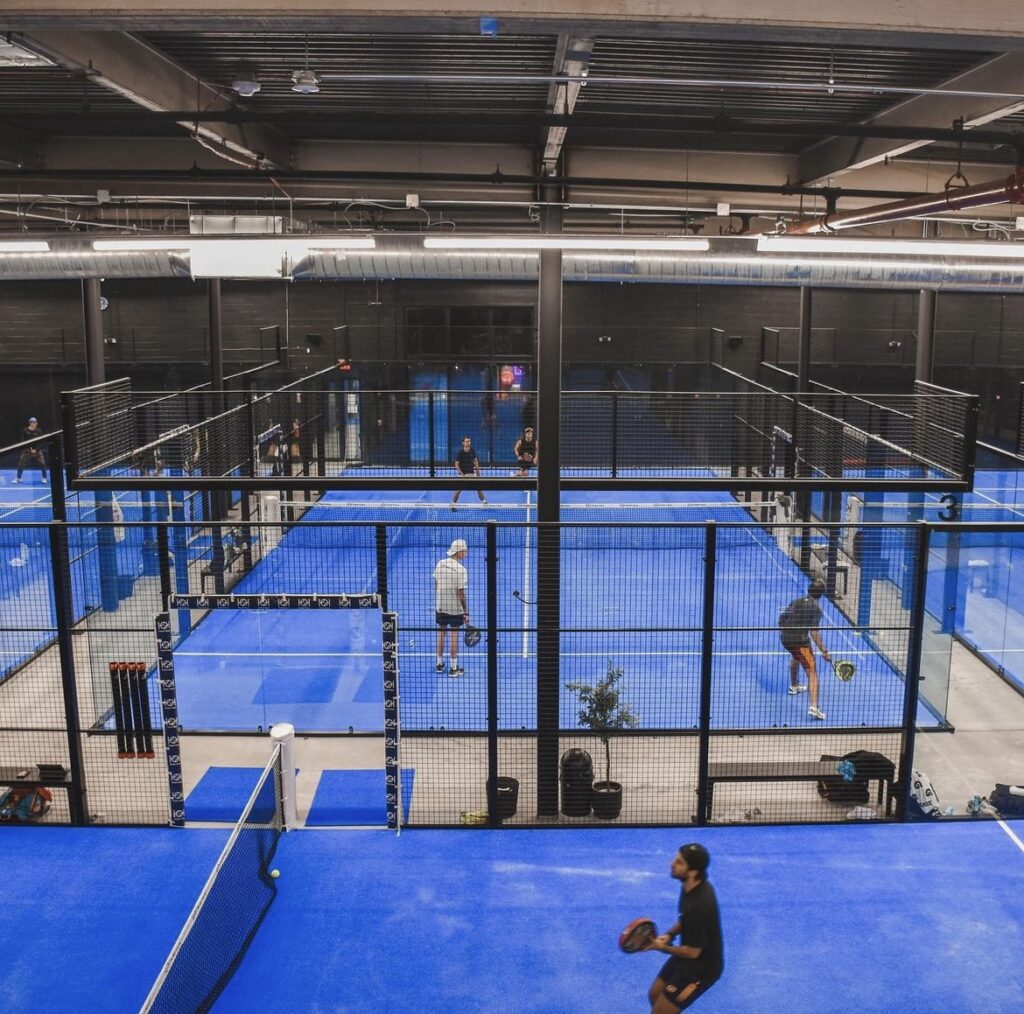
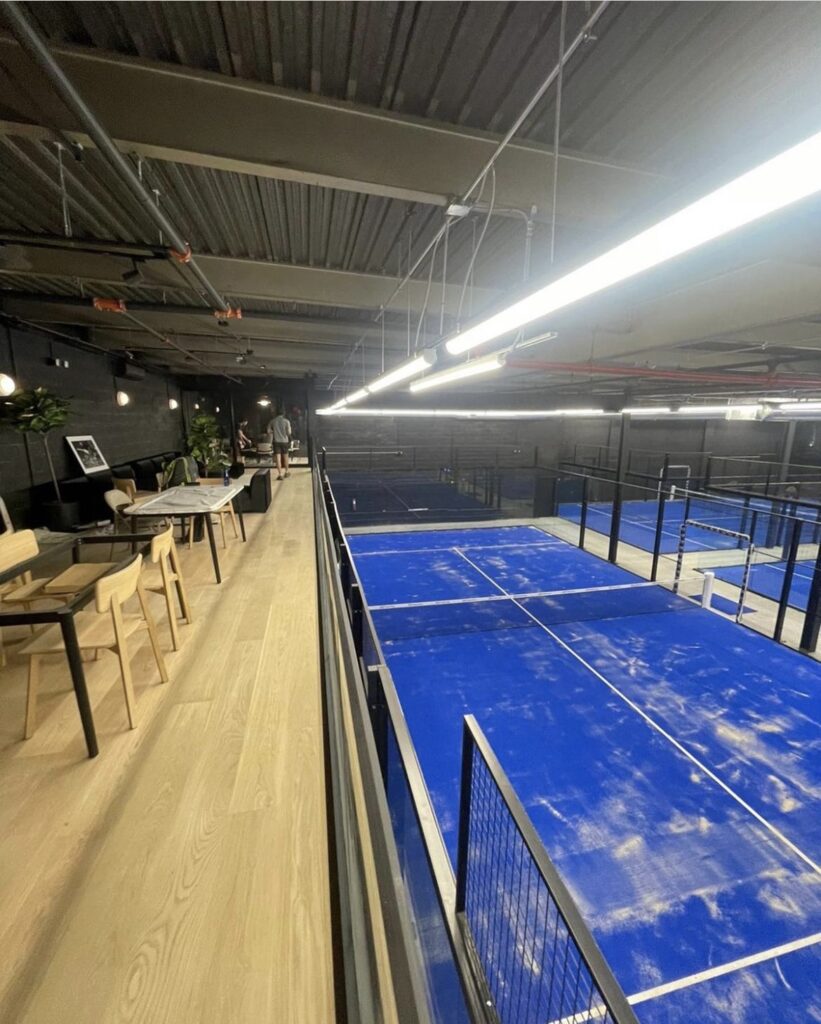
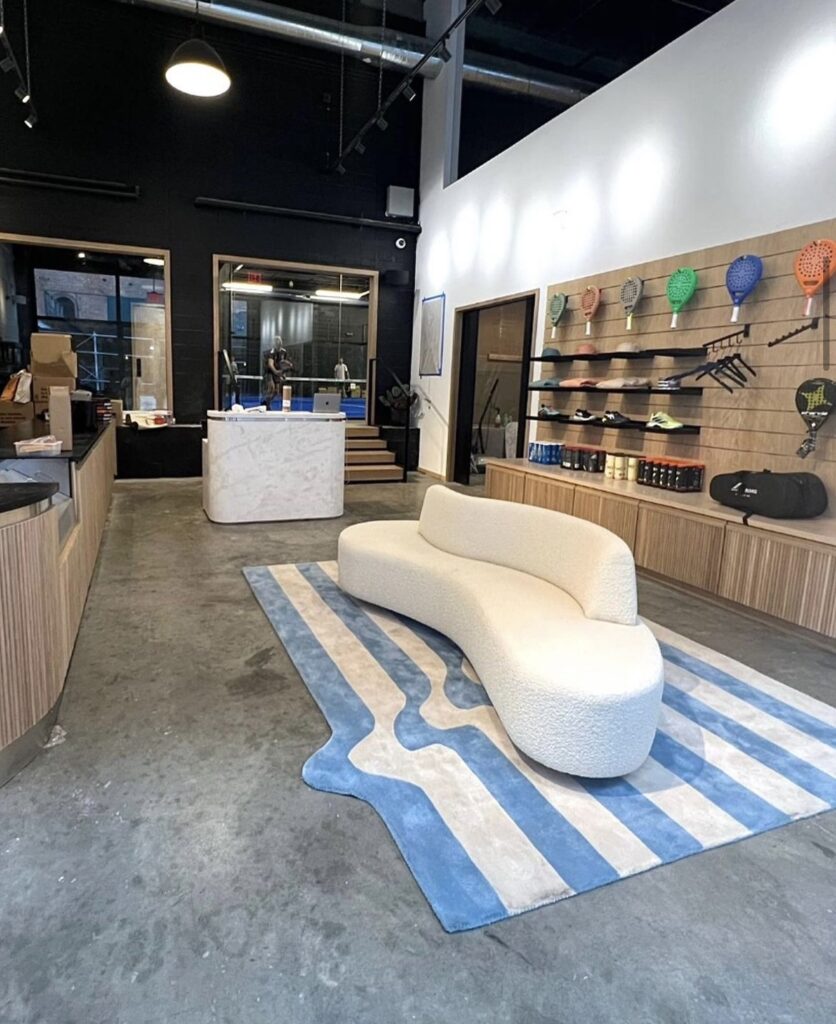
Italy first
Padel Hero’s concept is quite straightforward: we operate large-scale, padel-only sports clubs. I would say there are two elements that differentiate our clubs from others.
In all of these facilities, there is additional space that is currently unused where we can increment with at least XNUMX courts for each facility.
With the high demand there currently is, you can also accommodate more clients instead of having to continuously tell them there aren’t available slots. That’s a problem many smaller clubs have.
But these will be projects for early / mid XNUMX if we decide to go through with them.
I always wanted to get the business right in Italy first, and the proof that the model works before expanding left and right.
Now that we have done that, I have a lot more conviction in opening more facilities in Italy, which is what we are doing.
Do not neglect the technical part
The main bucket of differentiation comes with the technical and professional standard at our facilities.
This starts from things that may seem as trivial as having the best quality courts (something that is often overlooked) to what is ultimately the most important element: having extremely qualified and professional coaches and staff members.
Curating the technical part of the club becomes critical if you want to become the reference point for the sport in your area. We handpicked a Spanish instructor (our “technical director”) to sort of lead the front and the rest of the team. In Spain the game is at a much higher level so, naturally, the coaching level is also a lot more advanced.
This doesn’t mean we only target the better players. There needs to be respect for clients at all levels of the game.
It’s hard to coach the best players, but it’s just as hard to teach someone holding a racquet for the first time. We make sure customers know they will be taken seriously regardless of their level.
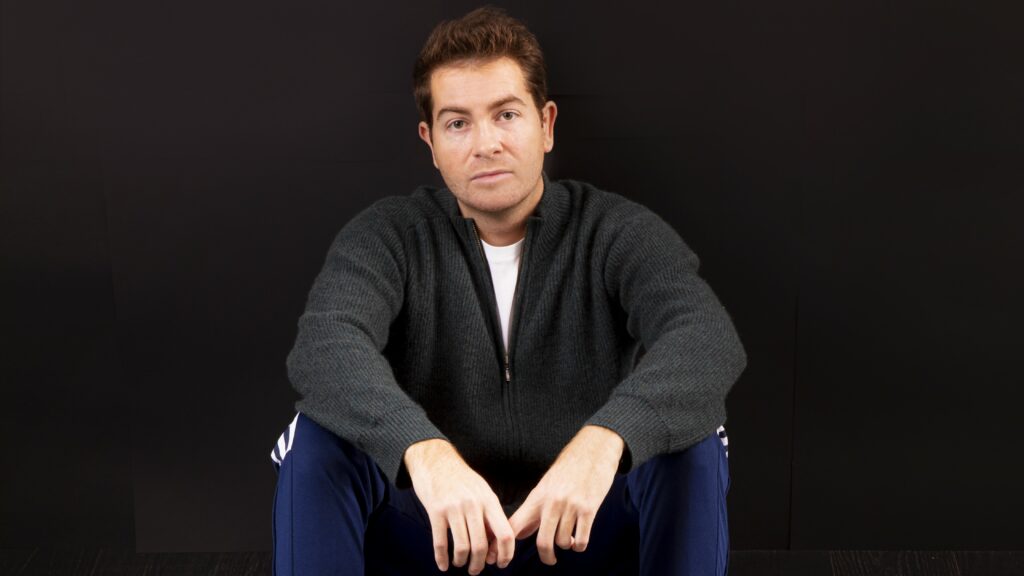
“It is as difficult to train beginners as it is advanced”
The distance with Spain, I would say, is not only measured in the number of courts but the quality of the players and the demographic of players playing.
The club first opened in September. We’ve seen a continuous increase in the sheer number of visitors and players over the last few months, and I think we will see an important uptick as we get into the spring months.
“An increase in spectators and players”
We’ve had a few thousand different players visit the facility. In terms of regular customers, I would say this number is still close to circa XNUMX.
This will naturally increase as more people know of our existence and of the products and services we offer.
In general, peak hours (Monday to Friday after XNUMX PM and weekends) are always full, to the point that most people book a week or so in advance to be able to secure a slot.
Many people are also playing for the first time, and most players are adults.
“Covid had an amplifying effect”
This ties well with the follow-up question of evolution of padel in Italy.
I think that, over the course of the last 3-4 years, and in general post-COVID, there has been an amplifier effect, where the supply of courts and the number of players has increased dramatically.
The country has gone from around 2000 courts to more than 6000. However, this figure remains incredibly far from the approximately 30000 courts in Spain.
“In Spain, padel is an alternative to tennis or football”
In Italy most of the players are 25-30+ year olds – there still is very little culture around kids and youngsters playing, whereas in Spain it’s a now a real alternative to football and tennis.
This is also why I think there is still massive whitespace in operating padel facilities.
Padel Hero will have new centers
Parma and Versilia are the two certain locations.
We should be open with the Versilia location, which will have 8 courts, at some point before or during the summer in 2023.
So, we should have 30 courts by the end of 2023. In all of these facilities, there is additional space that is currently unused where we can increment with at least 2 courts for each facility.
We have two other projects that we are bringing forward in parallel in the north of Italy, but these will be projects for early / mid 2024 if we decide to go through with them.
UK and France
I always wanted to get the business right in Italy first, and the proof that the model works before expanding left and right. Now that we have done that, I have a lot more conviction in opening more facilities in Italy, which is what we are doing.
We are looking at the UK and France in particular.
I think both are very interesting and despite having different structural characteristics, I could see us opening in either of the two countries at some point.
We have only just started looking more concretely at opportunities, so it may take a moment to find the right situation.
But I’m personally very interested in both markets and I do see the sport developing in a significant way in both in the future. Luckily there is a slightly longer window of time for these markets.
Padel in USA with Padel Haus
So, for context, ever since I started looking at Padel from a business perspective, I always thought the Padel movement somewhat needed the sport to also take off in the United States for it to become a truly global phenomenon. I was always very intrigued by the fact that padel in the US was inexistent apart from Miami, where there is a large South American community and a favourable climate.
So, I was sort of fascinated by this, but apart from that, I just parked the idea as I was focused on starting in Italy.
The Padel Haus address is XNUMX Kent Avenue, in Williamsburg, Brooklyn, on the banks of the Hudson.
It’s a facility with 307 indoor courts, and is closer to Manhattan than people think, about 4-10 minutes away from SoHo and easily reachable with the subway.
Betting on young people to increase general interest
One is that there needs to be more involvement from kids.
I’m talking about ages 10 to 16. Spain aside, this is still happening in a very limited way where padel is played – even in Italy. There needs to be greater attention to and investment in kids, padel programs tailored around them, and even academies.
There needs to be a sort of journey that a kid can aspire to follow, much like in tennis or in football. My goal is to involve as many kids as possible. They are the future of the sport.
The second is that at a professional level the gap between Argentinian/Spanish players and players from other countries is still much too wide. When you watch the pro tournaments online, be it World Padel Tour or Premier Padel, you’ll notice that the final stages are always held amongst Argentinians and Spaniards.
This makes it relatively boring at a certain point and, ultimately, reduces global interest.
When the United States, China, Italy, Russia will each have their star team that can compete at the same level, I think Padel will be followed with more interest and the movement will gain a lot more popularity. This will increase the number of kids playing, which brings me back to point number 1.
Franck Binisti discovers the padel at the Club des Pyramides in 2009 in the Paris region. Since padel is part of his life. You often see him touring France going to cover the major events of padel French.




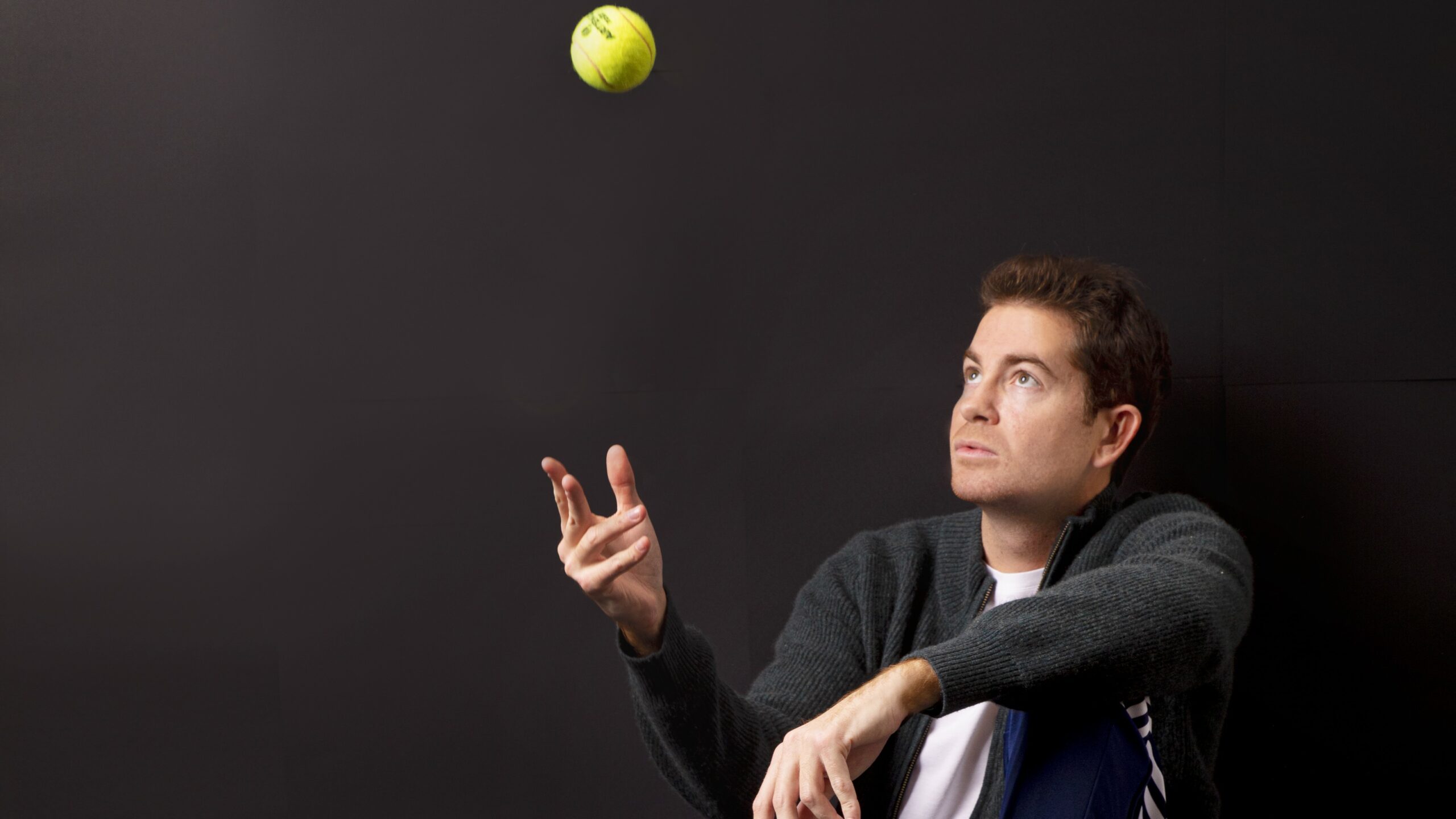











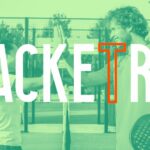




















































































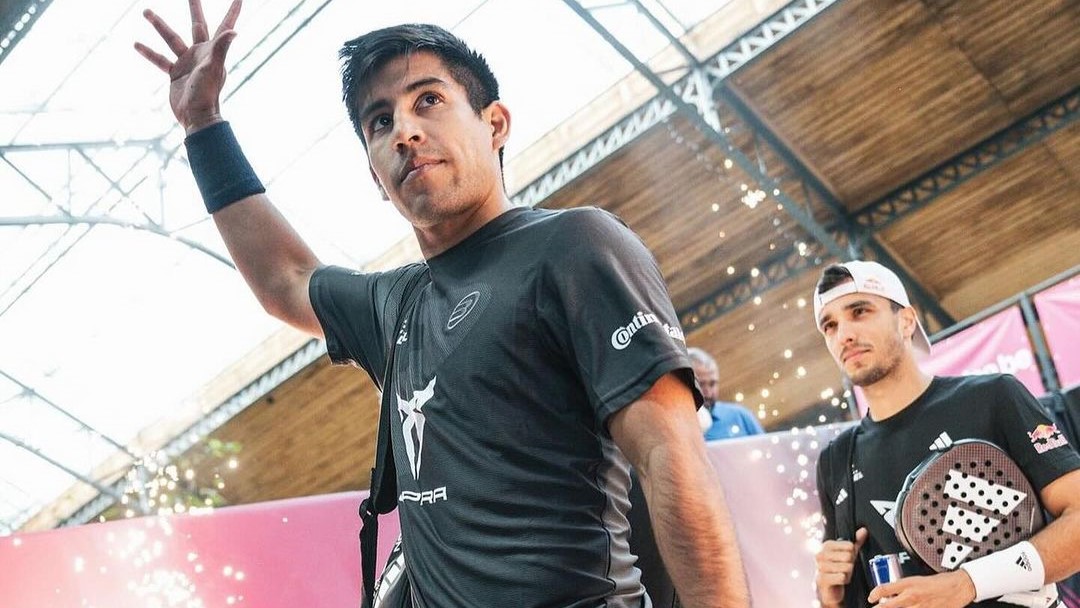 Premier Padel Brussels P2 – “Chingalan” on the way to its second final
Premier Padel Brussels P2 – “Chingalan” on the way to its second final The All Star Tour returns on May 16 at the All In in Lyon
The All Star Tour returns on May 16 at the All In in Lyon Premier Padel Brussels P2 – Gemma Triay and Claudia Fernandez return to the final
Premier Padel Brussels P2 – Gemma Triay and Claudia Fernandez return to the final Guillaume Codron de Sud Padel : “A family project”
Guillaume Codron de Sud Padel : “A family project” Nallé Grinda: “Democratize the padel in the USA with PadelX "
Nallé Grinda: “Democratize the padel in the USA with PadelX " Simon Boissé: “We know that there are two nations in front of us”
Simon Boissé: “We know that there are two nations in front of us” Marie Maligo: “This period of frequent changes of partners was beneficial for me”
Marie Maligo: “This period of frequent changes of partners was beneficial for me”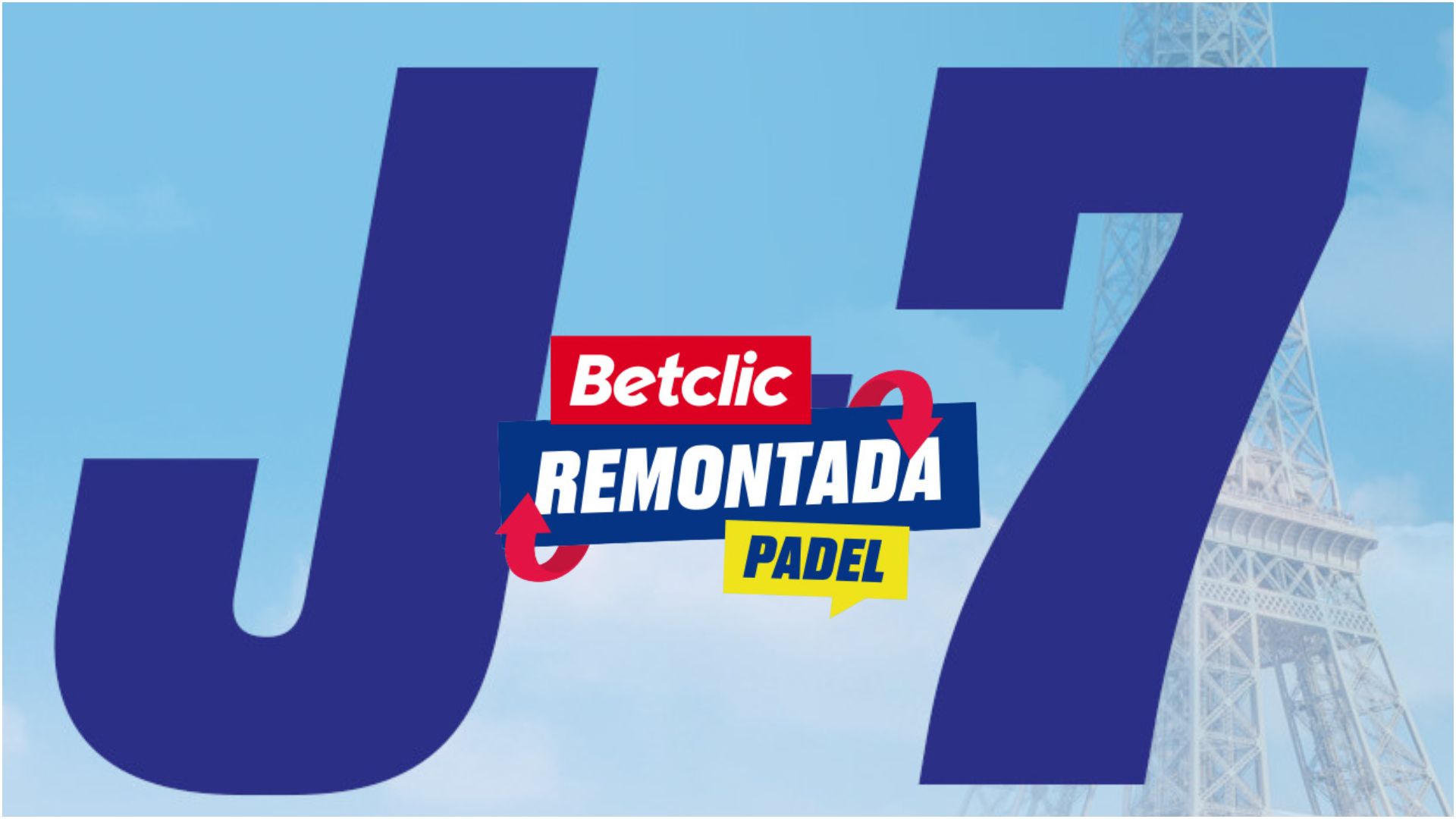 D-7 of the “BetClic Remontada Padel”, at the foot of the Eiffel Tower
D-7 of the “BetClic Remontada Padel”, at the foot of the Eiffel Tower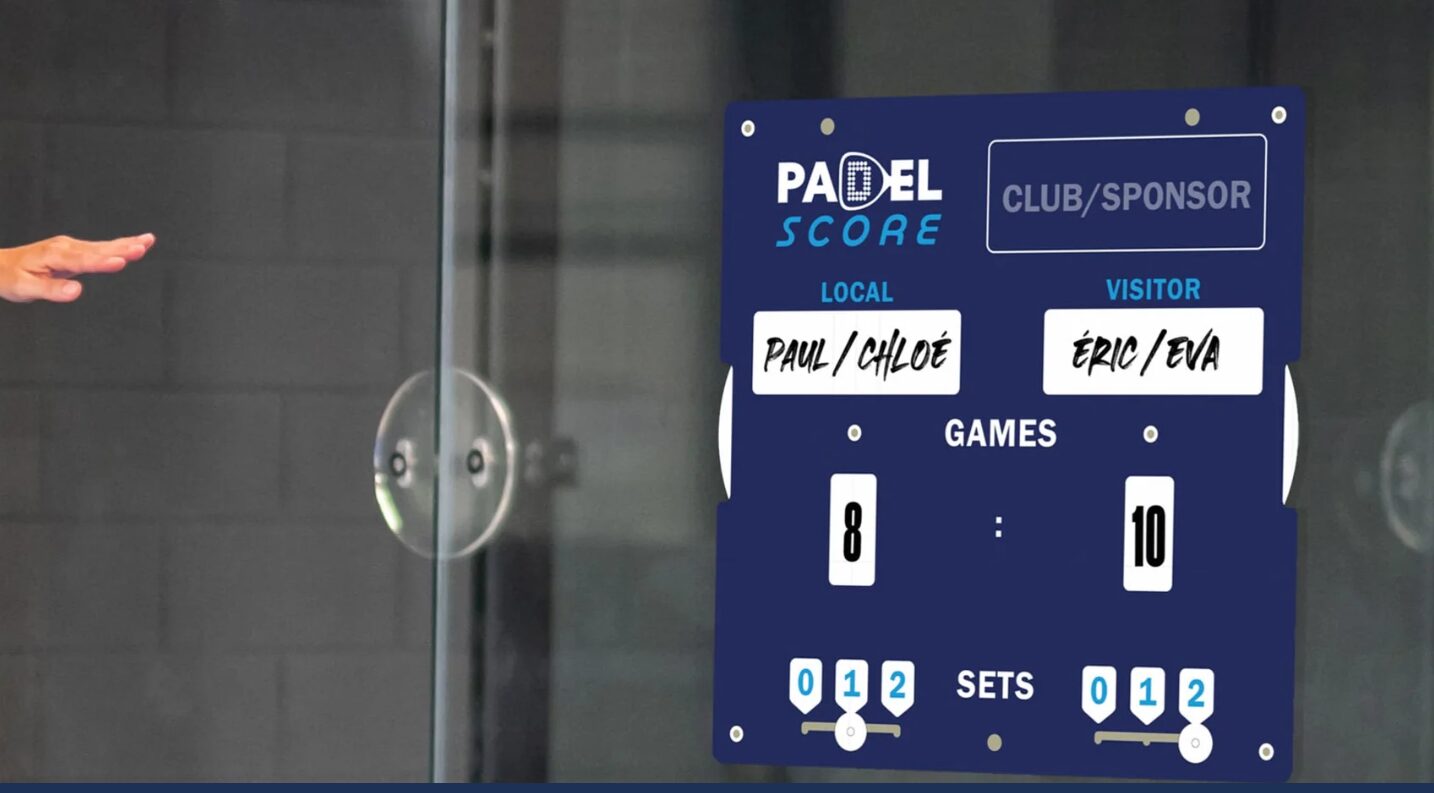 Padel Score: an essential table for keeping score
Padel Score: an essential table for keeping score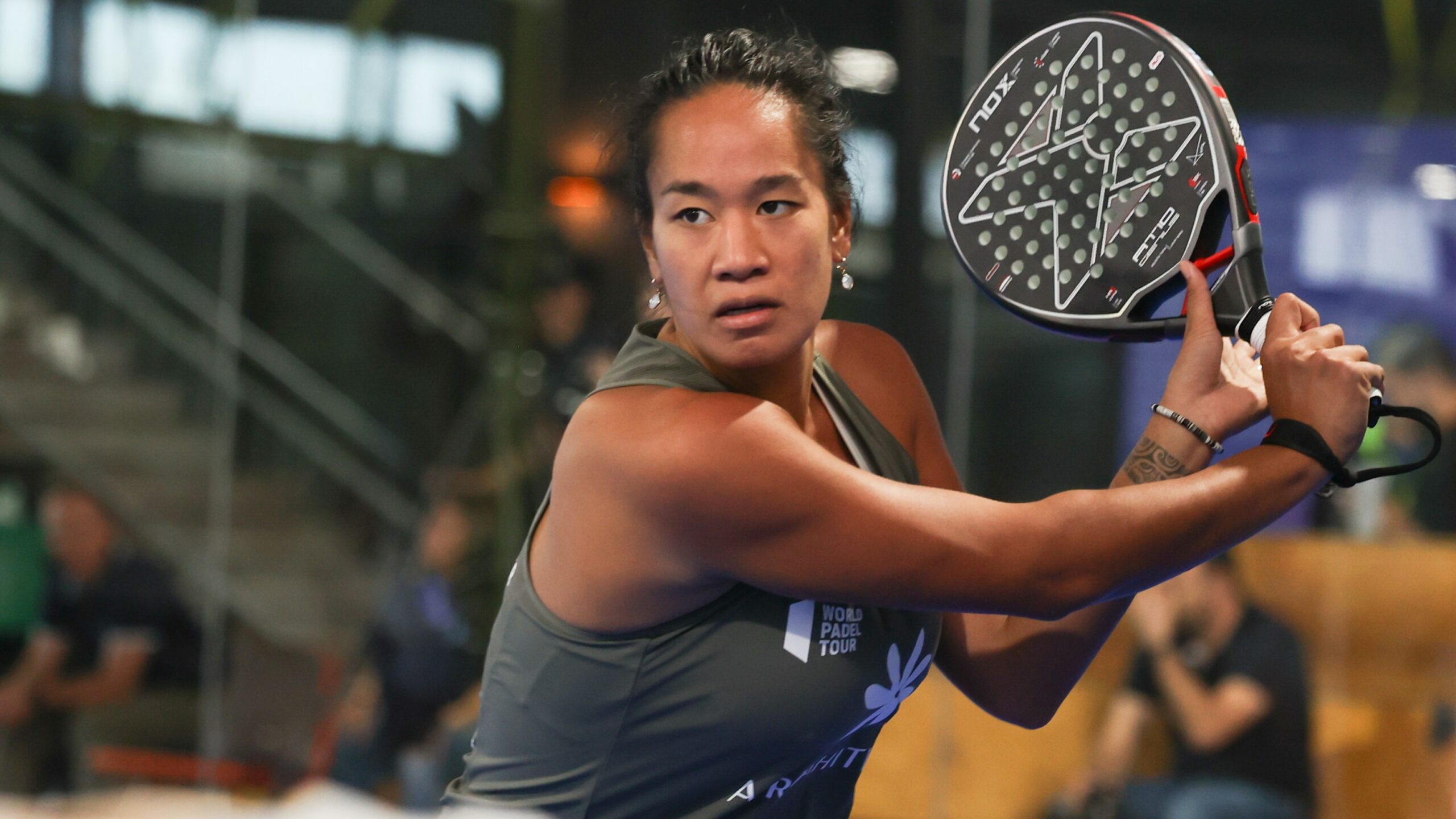 Léa Godallier makes her big return to the slopes this weekend
Léa Godallier makes her big return to the slopes this weekend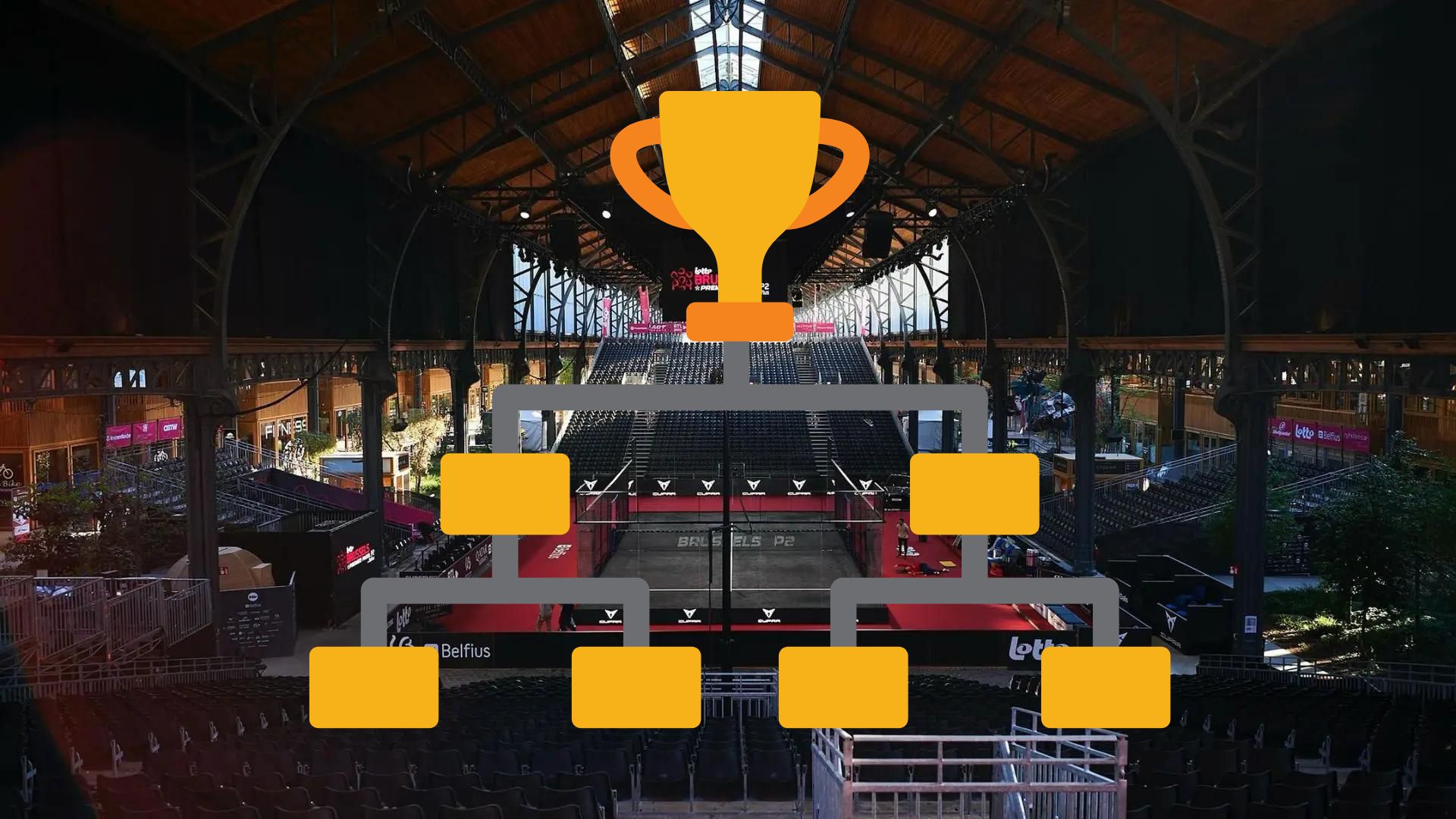 Premier Padel Brussels P2 – Time for the semi-finals!
Premier Padel Brussels P2 – Time for the semi-finals!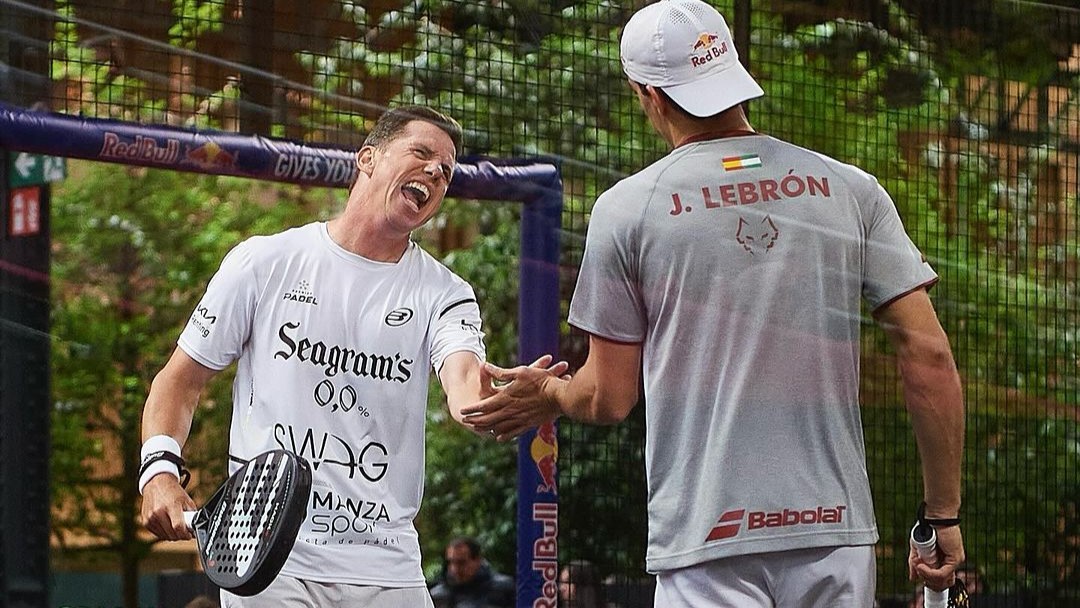 When will Lebron and Paquito split?
When will Lebron and Paquito split?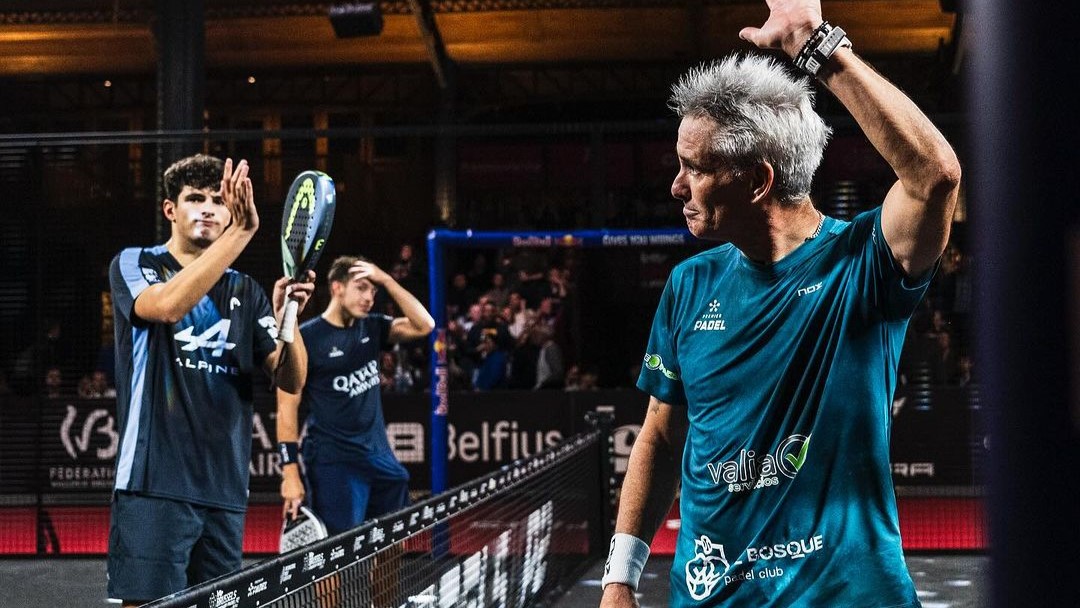 Premier Padel Brussels P2 – Coello and Tapia had to save two match points against Lamperti and Belluati to qualify in the half!
Premier Padel Brussels P2 – Coello and Tapia had to save two match points against Lamperti and Belluati to qualify in the half!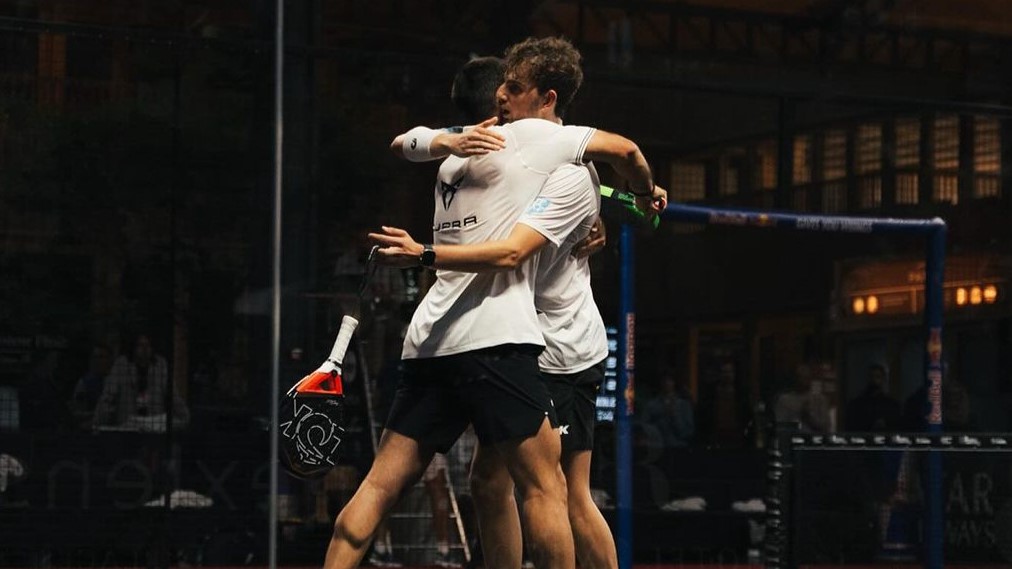 Premier Padel Brussels P2 – Mike Yanguas and Javi Garrido once again take the advantage over Stupa / Di Nenno
Premier Padel Brussels P2 – Mike Yanguas and Javi Garrido once again take the advantage over Stupa / Di Nenno José Manuel Escin at the inauguration of Casa Padel DOS: “Finally, and thank you!”
José Manuel Escin at the inauguration of Casa Padel DOS: “Finally, and thank you!” Padel Score comes to Tahiti for American Express Padel Cup!
Padel Score comes to Tahiti for American Express Padel Cup! Do you know the Rafa Nadal Academy Tour?
Do you know the Rafa Nadal Academy Tour? Play at padel on his yacht? Possible for €233.000!
Play at padel on his yacht? Possible for €233.000! Our Top 10 training courses padel in France and Europe
Our Top 10 training courses padel in France and Europe At the heart of padel – Episode 25: Paul and Andoni answer your questions
At the heart of padel – Episode 25: Paul and Andoni answer your questions Tactical padel – What to do when faced with players who systematically stay at the bottom?
Tactical padel – What to do when faced with players who systematically stay at the bottom? The basic tactics of padel
The basic tactics of padel At the heart of padel – Episode 25: Paul and Andoni answer your questions
At the heart of padel – Episode 25: Paul and Andoni answer your questions At the heart of padel – Episode 23: defend the window well
At the heart of padel – Episode 23: defend the window well Prohibition on playing topless Padel : the reasons
Prohibition on playing topless Padel : the reasons FIP Tour – Going far from Europe, THE strategy to earn points!
FIP Tour – Going far from Europe, THE strategy to earn points! What is a good football player? padel ?
What is a good football player? padel ? “Lefties give me headaches when I play against them!”
“Lefties give me headaches when I play against them!” At the heart of padel – Episode 14: how to earn points in winter?
At the heart of padel – Episode 14: how to earn points in winter? A par 4 is always a winner...even if you manage to defend it!
A par 4 is always a winner...even if you manage to defend it! Carbon fiber VS fiberglass: what to choose?
Carbon fiber VS fiberglass: what to choose? How to effectively test a racket padel ?
How to effectively test a racket padel ? La padel to fight Parkinson's disease
La padel to fight Parkinson's disease Don't play with a cracked or broken racket, your body will thank you!
Don't play with a cracked or broken racket, your body will thank you! Michel Cymes: “The padel, physically, it’s serious!”
Michel Cymes: “The padel, physically, it’s serious!” Jeremy Gala: “Promote the padel among young people in Belgium remains a challenge”
Jeremy Gala: “Promote the padel among young people in Belgium remains a challenge” The French Touch Academy organizes its selection day Padel-Study
The French Touch Academy organizes its selection day Padel-Study Report on the detection and training of younger generations
Report on the detection and training of younger generations
yes and no, football is popular worldwide and only 6 countries have won the world cup for 40 years...
One of the major obstacles to development is financial, it is a very expensive sport compared to jogging, cycling, swimming, team sport...
It is a bad sport for children because it is asymmetrical and not collective.
People play a lot at the beginning because they progress quickly, but when they start to stagnate, to injure themselves (elbow, shoulder, sprain…) they slow down or move on.
It reminds me of the squash of the 80s, it fell pretty quickly, yet everyone was playing, talking about it, we even saw it in Woody Allen's films.